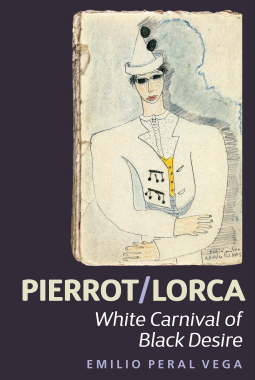
Pierrot/Lorca
White Carnival of Black Desire
by Emilio Peral Vega
This title was previously available on NetGalley and is now archived.
Buy on Amazon
Buy on BN.com
Buy on Bookshop.org
*This page contains affiliate links, so we may earn a small commission when you make a purchase through links on our site at no additional cost to you.
Send NetGalley books directly to your Kindle or Kindle app
1
To read on a Kindle or Kindle app, please add kindle@netgalley.com as an approved email address to receive files in your Amazon account. Click here for step-by-step instructions.
2
Also find your Kindle email address within your Amazon account, and enter it here.
Pub Date Oct 15 2015 | Archive Date Jan 10 2016
Boydell & Brewer | Tamesis Books
Description
Peral Vega explores the importance of Pierrot as a symbol of failure in matters of love in García Lorca's imagery and his literary and personal life.
Academic research has paid little attention to the importance of the figure of Pierrot in García Lorca's imagery and, above all, in his literary and personal life. An image of marginality and failure, Pierrot was soon taken over by Spanish intellectuals of the early twentieth century as a representation of the bohemian spirit and, corresponding to his marginal status in matters of love, as a symbol of furtive desires experienced by those whose sexuality had to remain silent. Consequently, García Lorca, as Pierrot, needs a mask to cover his identity, facing perpetual failure in his relentless pursuit of the other. As can be seen already from the poems, prose and plays of his youth,García Lorca outlines in Pierrot his innermost self, a trend that will continue in the aforementioned series of drawings and some of his major pieces, such as El público. Pierrot / Lorca: White Carnival of Black Desire aims, from a multidisciplinary perspective, to open new critical readings of both García Lorca's work and some episodes of his life; as with, for example, his relationship with Salvador Dalí, which can be presented in theatrical terms: Harlequin (Dalí) / Pierrot (García Lorca).
Emilio Peral Vega is Associate Professor of Spanish Literature at the Universidad Complutense de Madrid.
Academic research has paid little attention to the importance of the figure of Pierrot in García Lorca's imagery and, above all, in his literary and personal life. An image of marginality and failure, Pierrot was soon taken over by Spanish intellectuals of the early twentieth century as a representation of the bohemian spirit and, corresponding to his marginal status in matters of love, as a symbol of furtive desires experienced by those whose sexuality had to remain silent. Consequently, García Lorca, as Pierrot, needs a mask to cover his identity, facing perpetual failure in his relentless pursuit of the other. As can be seen already from the poems, prose and plays of his youth,García Lorca outlines in Pierrot his innermost self, a trend that will continue in the aforementioned series of drawings and some of his major pieces, such as El público. Pierrot / Lorca: White Carnival of Black Desire aims, from a multidisciplinary perspective, to open new critical readings of both García Lorca's work and some episodes of his life; as with, for example, his relationship with Salvador Dalí, which can be presented in theatrical terms: Harlequin (Dalí) / Pierrot (García Lorca).
Emilio Peral Vega is Associate Professor of Spanish Literature at the Universidad Complutense de Madrid.
Available Editions
| EDITION | Other Format |
| ISBN | 9781855662964 |
| PRICE | $95.00 (USD) |



